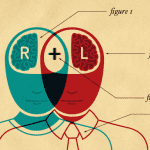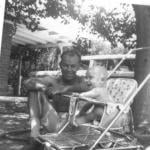 It was the beginning of a new and exciting decade. I had the bangs. I had the vest and jean skirt. I knew the Running Man and the Roger Rabbit. But I left the seventh grade dance feeling worthless. I came back home and collapsed on the couch in tears. Nobody I liked wanted to slow dance with me, so I must be detestable.
It was the beginning of a new and exciting decade. I had the bangs. I had the vest and jean skirt. I knew the Running Man and the Roger Rabbit. But I left the seventh grade dance feeling worthless. I came back home and collapsed on the couch in tears. Nobody I liked wanted to slow dance with me, so I must be detestable.
As my eyes filled with tears behind my plastic pink glasses, my mother reached for a large heavy book from our bookshelf. She sat close to me, opened the thick cover, and began to flip through the pages.
But it wasn’t the Bible she had brought down from the shelf. She didn’t read me self-esteem verses from Psalm 139. She read to me from her high school yearbook.
“This is my friend Claudia. She was so much fun. We laughed all night long once.”
“Ah, David Smith. He was a very loyal friend to his marching band mates. Now he is a nurse and he has three kids.”
“Phil Donaldson was a troublemaker, but in our senior year, his brother died and something about him changed.”
“I never got along with Ann Stone.”
“Betty Collier was the first black girl to come to our school and we were friends until the tenth grade.”
My tears stopped and I leaned over my mom’s shoulder to look at the odd hairstyles and typical teenage signatures. These people were all middle-aged adults now. And they all looked dopey and out of style to me.
It didn’t really sink in until we read the inscriptions on the inside covers of her yearbook. They were like ghost letters from the past. My mom read me each inscription and then fill me in with the backstory.
I began to catch a glimpse of life after seventh grade.
I had hope.
Twenty years later, I’m fully convinced that I’m hilarious and adorably awkward—but seventh graders are the same, but now the popularity disparity is quantifiable. With a hard number of likes, followers, and friends in social media, a young person can see her social success in glowing text. Validation has become a number and numbers are real and indisputable. And just like my experience with real feelings of devastation after the dance, our young students are internalizing the rejection, or alternatively, riding high on the attention.
A young person in my youth group recently joined Twitter. When he saw my profile he immediately asked me how I got so many followers.
Another friend recruited her Facebook friends to follow her son on Instagram because his lack of followers was creating issues for him among his peers at school.
I get texts from students reminding me to “like” things that they have posted.
Our young people seek out approval, just as young people always have, but now there is a number that shows them how much approval they have for each account, each post, each picture, each statement.
Approval equals worth.
Worth equals hope.
Hope gives them what they need to survive adolescence.
My mother had an advantage with my crisis because she wasn’t fighting real numbers. She was fighting my overall sense of worthlessness that was based on fuzzy perceptions of reality at a seventh grade dance.
But now our students are navigating their self-worth, armed with numbers and texts. We must engage this fragile sense of self that is based on likes, because young people need a gospel that subverts those standards.
In my next post, I will focus on strategies. But this month I want to consider the questions:
How do we instill human dignity and worth that is removed from the dystopian result of social media groupthink?
What are we doing or not doing to reinforce the idea that likes, followers, and friends are important to the self-worth of an individual?
How do we guide young people and young adults to embrace their own humanity, in spite of the numbers?
—













